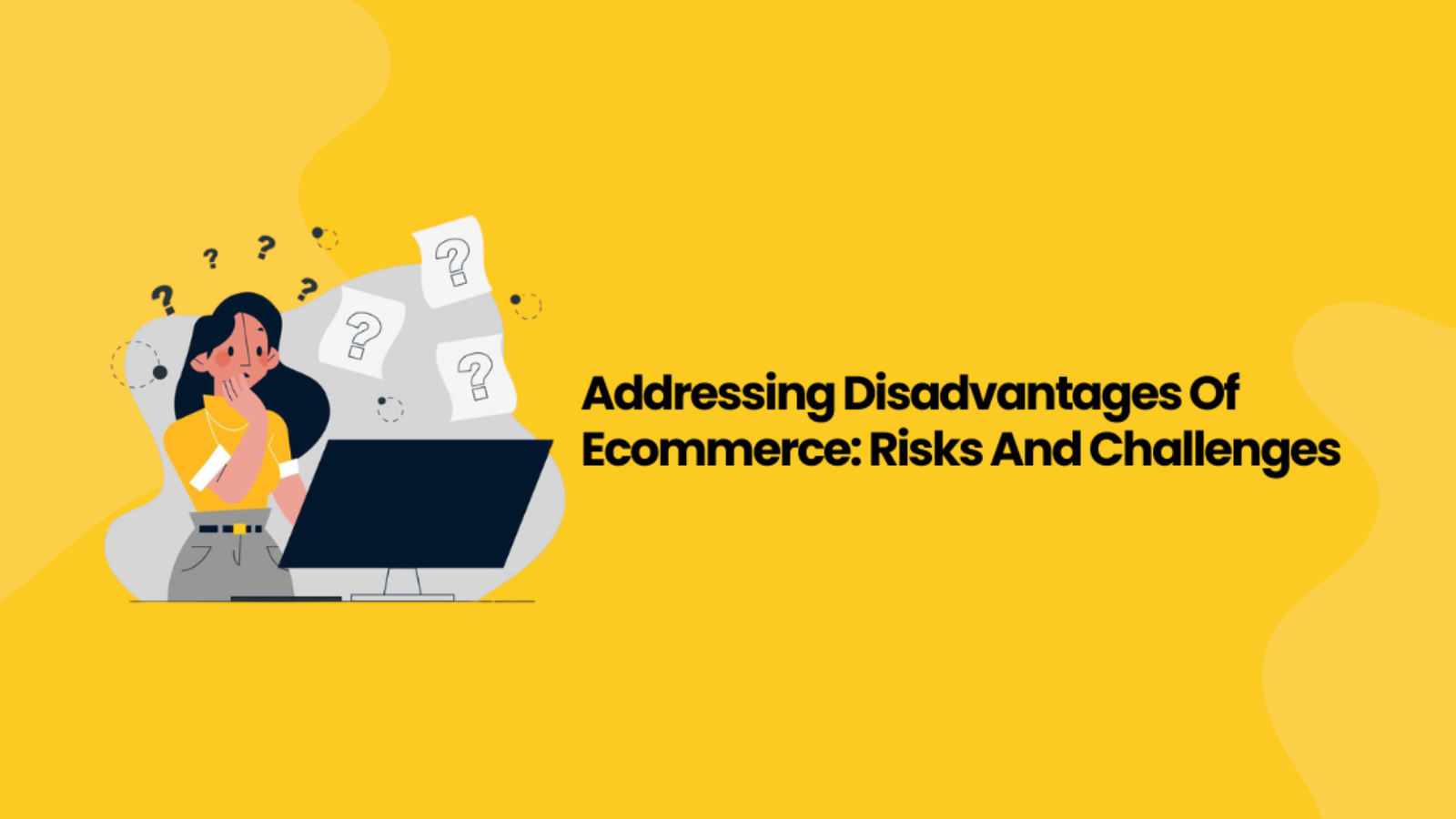Ecommerce has undoubtedly transformed the retail landscape, making shopping more accessible and convenient than ever before. With just a few clicks, consumers can explore a vast range of products and services, compare prices, and have items delivered directly to their doorsteps. Yet, despite these advancements, it’s essential to address the disadvantages of ecommerce to gain a comprehensive understanding of its impact on both consumers and businesses. In this blog, we’ll delve into the challenges associated with ecommerce and provide insights on how to navigate these issues effectively.
1. Navigating Security and Privacy Risks
Security and privacy concerns remain a significant challenge in the world of ecommerce. Shopping online requires sharing personal information, including names, addresses, and payment details. Despite ongoing improvements in cybersecurity, the risk of data breaches, identity theft, and fraud persists. Hackers continually evolve their methods, posing threats to both consumers and businesses.
For Consumers: The consequences of a data breach can be severe, potentially leading to financial losses and prolonged legal battles to recover one’s identity.
For Businesses: A single breach can result in substantial financial losses, legal repercussions, and reputational damage.
How to Address It: Consumers should prioritise shopping on secure, reputable websites and use payment methods that offer fraud protection. Businesses should invest in robust security measures and regularly update their systems to safeguard customer data.
2. Overcoming the Lack of Personal Interaction
One of the drawbacks of e-commerce is the absence of personal interaction. Traditional retail allows customers to engage directly with sales associates, receive personalised advice, and experience products firsthand. This level of human connection is often missing in the online shopping experience.
For Consumers: The inability to physically assess products or seek personalised recommendations can be a drawback, especially for items like clothing or electronics.
For Businesses: Creating an engaging online experience can be challenging but crucial for customer satisfaction.
How to Address It: Retailers can enhance the online shopping experience by offering detailed product descriptions, virtual try-ons, and live chat support. Providing comprehensive product information and interactive features can help bridge the gap.
3. Managing Shipping Costs and Delays
While home delivery is a significant advantage of ecommerce, it also comes with its challenges. Shipping costs can add up, particularly for smaller orders, and delays can disrupt the convenience of online shopping.
For Consumers: Unexpected shipping costs and delays can affect the overall value and satisfaction of an online purchase.
For Businesses: Managing logistics and maintaining timely deliveries can be complex and costly.
How to Address It: Consumers should consider shipping policies and costs before making purchases. Businesses can optimise their logistics, offer transparent shipping options, and invest in efficient supply chain management to minimise delays.
4. Addressing Limited Product Experience
The inability to physically interact with a product before purchase is a notable disadvantage of ecommerce. Online descriptions and images may not always accurately represent the product, leading to potential dissatisfaction and returns.
For Consumers: The risk of receiving a product that doesn’t meet expectations can be frustrating and inconvenient.
For Businesses: High return rates due to inaccurate product representations can be costly.
How to Address It: Online retailers can provide high-quality images, detailed product descriptions, and customer reviews to offer a more accurate representation. Additionally, implementing flexible return policies can help manage customer expectations.
5. Competing in a Saturated Market
The accessibility of ecommerce has led to increased competition and market saturation. While this benefits consumers through lower prices and innovation, it poses challenges for businesses trying to differentiate themselves.
For Consumers: Increased competition often results in better deals and more options.
For Businesses: Standing out in a crowded marketplace requires strategic marketing and a strong value proposition.
How to Address It: Businesses should focus on unique selling points, invest in targeted marketing strategies, and build strong brand identity to compete effectively in the saturated ecommerce space.
6. Mitigating Environmental Impact
Ecommerce’s environmental impact is an important consideration. Packaging waste and the carbon footprint associated with shipping contribute to environmental challenges.
For Consumers: Being aware of the environmental impact of online shopping can influence purchasing decisions.
For Businesses: Sustainable practices and eco-friendly packaging are essential to minimise environmental impact.
How to Address It: Consumers can support businesses that prioritise sustainability. Businesses should adopt eco-friendly packaging solutions, optimise shipping practices, and promote environmentally responsible policies.
7. Building Customer Loyalty in a Digital World
Customer loyalty can be harder to achieve in the digital marketplace compared to traditional retail. The ease of comparison shopping and the lack of personal interaction can affect brand loyalty.
For Consumers: The abundance of choices and ease of switching between retailers can dilute brand loyalty.
For Businesses: Building lasting relationships with customers requires more than just competitive pricing.
How to Address It: Businesses should focus on creating exceptional customer experiences, offering loyalty programs, and engaging with customers through personalised marketing and communication.
8. Managing Technological Dependence
Ecommerce is heavily reliant on technology, which can present its own set of challenges. Technical issues such as website downtime and payment processing errors can disrupt the shopping experience.
For Consumers: Technical glitches can detract from the convenience of online shopping.
For Businesses: Ensuring a smooth and secure online experience requires ongoing investment in technology.
How to Address It: Consumers should choose reliable platforms with good technical support. Businesses need to maintain robust technical infrastructure, invest in regular updates, and ensure that their systems are resilient to disruptions.
Conclusion
Addressing disadvantages ecommerce is crucial for a well-rounded perspective on this digital shopping trend. By acknowledging and understanding these challenges—ranging from security and privacy risks to environmental impacts and market competition—consumers and businesses alike can make more informed decisions. Balancing the benefits of ecommerce with an awareness of its potential drawbacks allows for a more thoughtful approach to navigating the online marketplace. Whether you’re a consumer or a business owner, recognizing and addressing these disadvantages can help you make better choices and optimise your ecommerce experience.

Add a Comment